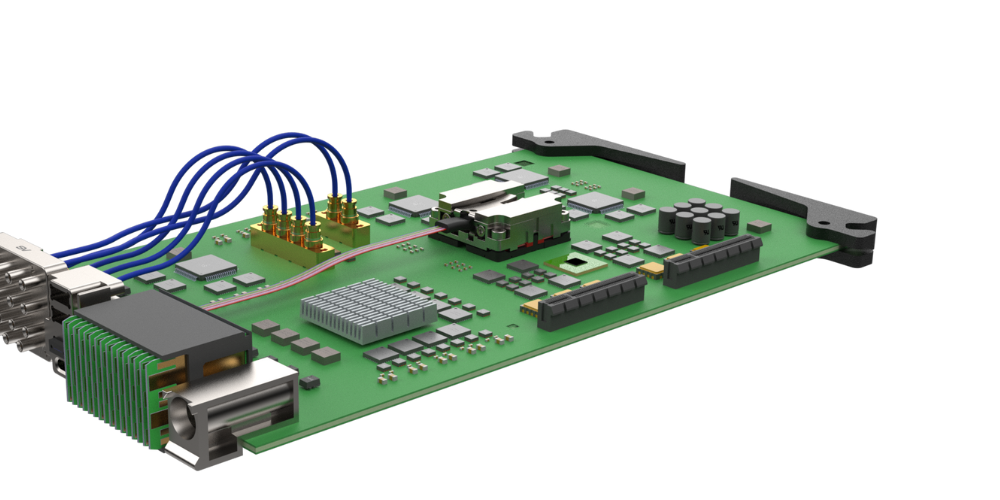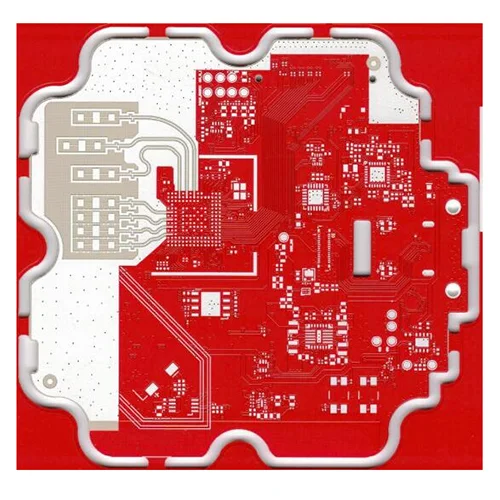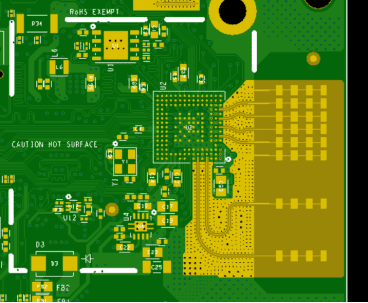Client: Anonymous
Industry: Telecom Infrastructure, 5G Macro/Micro Base Stations
Application: Power Amplifier (PA) Modules + RF Front-End PCBs
High-power base station equipment requiring PCBs are able to handle:
High current (30A+) for PAs
Low-loss RF (3.5GHz-28GHz for 5G)
Thermal stability (85°C ambient, 125°C local hotspots)
Key Challenges Faced:
Delamination risk from mixed thick-copper (6oz) and RF layers.
EMI coupling between power and RF sections.
Thermal warping under high thermal cycling.
Client: Anonymous
Industry: Fiber Optic Test & Measurement, High-Speed Data Transmission
Application: Next-gen 100G/400G+ optical transceivers, OTDR equipment, and 50GHz RF test modules.
FIS designs precision fiber optic tools, requiring ultra-low-loss PCBs to maintain signal integrity at millimeter-wave frequencies (up to 50GHz). Their challenges include:
Insertion loss degrading high-speed signals (>40Gbps).
Impedance mismatches causing reflection noise.
Thermal expansion leading to microvia cracking in compact designs.
The customer is a globally leading manufacturer of communication equipment, specializing in the development and production of large-scale routers, switches, servers, and high-speed networking devices. As modern network communications demand increasingly high signal integrity, reliability, and thermal stability, the customer required an 18-layer PCB with low-loss material (S1000-2M) and advanced immersion gold plating to ensure stable signal transmission and long-term reliability
The Rogers RO4835 + IT180 hybrid PCB offers unparalleled performance for high-frequency and microwave applications, combining the best attributes of both materials. From automotive radar systems to advanced wireless communication and military-grade electronics, this hybrid PCB is optimized to meet the performance, durability, and reliability requirements of modern technologies.
The Rogers RO4835 + FR4 PCB material is a game-changer for 77GHz automotive millimeter-wave radar systems. Its stability, low loss, and superior performance at high frequencies make it the ideal choice for automotive applications such as ADAS, radar systems, and sensor modules.
As we step into 2025, the electronics manufacturing industry is poised for transformative changes driven by technological advancements, shifting consumer demands, and global economic factors. At KKPCB, we are committed to staying at the forefront of these developments to deliver cutting-edge solutions to our clients. Here’s an overview of the key trends set to reshape the industry this year.
With the continuous development of high-frequency electronic devices, especially in wireless networks and satellite communications, information products are becoming faster and higher in frequency, and communication products are moving towards large capacity and high-speed wireless transmission for voice, video, and data standardization. As a result, the next generation of products requires high-frequency substrates. The process technology for high-frequency PCB production is continuously improving to meet the diverse needs of users. Based on over ten years of experience in PCB production, this article will detail the key technical aspects and considerations for the production of high-frequency microwave PCBs.
The client specializes in the development and production of a wide range of microwave electronic products. These products are extensively used in satellite communication, television broadcasting, long-range communication, data and image transmission, radar, remote control, remote sensing, electronic reconnaissance, and electronic countermeasures. With deep technical expertise in microwave technology and high-frequency electronic products, the customer serves multiple high-tech industries requiring precise, reliable, and high-frequency transmission solutions.
A high-frequency PCB is very similar to any other form of PCB (printed circuit board). It is compatible with microwave radio frequency communications, ranging from five hundred megahertz to two thousand gigahertz.
High-Frequency PCB is a subcategory in the field of PCB that is designed with extremely high electromagnetic frequencies. The typical frequency of high-frequency PCB is about 16 Ghz or higher.















